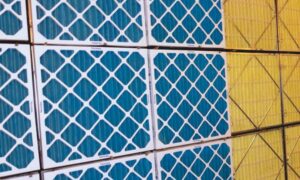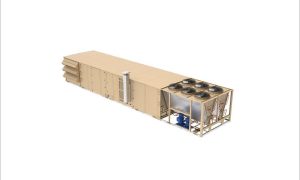Temperature stability and temperature uniformity inside the environment chamber are very important.
The environmental test chambers market is estimated to grow from USD 842 million in 2019 to USD 938 million by 2024 at a CAGR of 2.18 percent. The major drivers for this market include the increase in number of regulations in industries such as aerospace and defense, and automotive; growing requirement of monitoring the effects of various stress factors; and supportive government initiatives. The market growth is attributed to the increasing implementation of new regulations and standards in the aerospace and defence, automotive industries etc. However, a new market study published by Global Industry Analysts Inc., (GIA), in a report titled ‘Environmental Test Chambers – Global Market Trajectory & Analytics’ mentions the market to reach US$869 Million by the Year 2026.
Temperature and humidity chambers to hold largest share
The temperature and humidity chambers are expected to hold the largest share of the market by 2024. The environmental test chambers manufacturers majorly produce temperature and humidity chambers as a standard product or catalog product used for steady-state stability testing, basic temperature cycling, and accelerated stress testing of products or components associated with industries. A temperature and humidity chamber is essential for evaluating potential success or failure of a product in the field.
Automotive industry to register fastest CAGR
The environmental test chamber market for the automotive industry is expected to grow at the fastest CAGR by 2024. Growing production of automobiles across countries is likely to raise the demand for testing capabilities for a variety of components including seat belts, electronics, airbags, engines, lithium-ion batteries, and so on. Testing of automotive components and automobile is carried out in testing laboratories and manufacturing centers to help manufacturers improve the marketability of their products and reduce costs in the preproduction phase. Thus, the automotive industry is likely to witness increasing demand for environmental test chambers during the forecast period.
APAC to account for largest size of overall market during forecast period
APAC is the major contributor to the total size of the environmental test chambers market. Many economically advanced countries have their manufacturing units in the developing economies of APAC, especially China and India. The domestic markets in APAC are growing rapidly owing to the rising per capita income among the middle class. Moreover, consumer awareness about the importance of quality products is growing in this region. Environmental test chambers play a major role in testing the effects of specified environmental conditions on biological items, industrial products, electronic devices/components, and materials. Thus, the demand for these chambers in most APAC countries is likely to increase in the coming years.
Key market players
Among key market players, Presto Group and CM Envirosystems Pvt. Ltd. are from India. Other key players include CM Envirosystems Pvt. Ltd., and Presto Group (India), Angelantoni Test Technologies S.r.l. (Italy), Climats (France), Thermal Product Solutions (South Korea), Envsin Instrument Equipment Co. Ltd. (China).
In Germany: Memmert GmbH + Co. Kg, Weiss Technik UK, Binder GmbH, Konrad Technologies GmbH
In US: Russells Technical Products, Thermotron Industries, Cincinnati SubZero Products, Inc., Climatic Testing Systems, Inc., Hastest Solutions Inc., Hanse Environmental Inc., Scientific Climate Systems, Bahnson Environmental Specialties LLC, Eckel Noise Control Technologies .
And ESPEC from Japan is one of the leading players in the environmental test chambers market. ESPEC is engaged in the manufacturing and sales of environmental test chambers, energy devices, semiconductors, and flat panel display (FPD) equipment.
Environmental Chambers, the environmental testing devices are being used for various types of testing such as prototype evaluation, research & development testing, production testing, accelerated stress testing, reliability testing, failure analysis, and any other application where environmental simulation is needed.
Cookie Consent
We use cookies to personalize your experience. By continuing to visit this website you agree to our Terms & Conditions, Privacy Policy and Cookie Policy.













